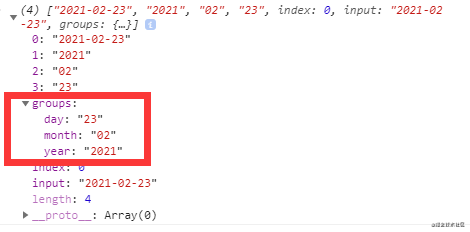ES6 引入了 Class(类)这个概念,作为对象的模板。通过class关键字,可以定义类。
//定义类
class Point {
constructor(x, y) {
this.x = x;
this.y = y;
}
toString() {
return '(' + this.x + ', ' + this.y + ')';
}
}
ES6 的类,完全可以看作构造函数的另一种写法。
class Point {
// ...
}
typeof Point // "function"
Point === Point.prototype.constructor // true
使用的时候,也是直接对类使用new命令,跟构造函数的用法完全一致。
class Bar {
doStuff() {
console.log('stuff');
}
}
var b = new Bar();
b.doStuff() // "stuff"
构造函数的prototype属性,在 ES6 的“类”上面继续存在。事实上,类的所有方法都定义在类的prototype属性上面。
类的内部所有定义的方法,都是不可枚举的(non-enumerable)。
类的属性名,可以采用表达式。
let methodName = 'getArea';
class Square {
constructor(length) {
// ...
}
[methodName]() {
// ...
}
}
类和模块的内部,默认就是严格模式,所以不需要使用use strict指定运行模式。ES6 实际上把整个语言升级到了严格模式。
constructor 方法
类的默认方法,通过new命令生成对象实例时,自动调用该方法。一个类必须有constructor方法,如果没有显式定义,一个空的constructor方法会被默认添加。
class Point {
}
// 等同于
class Point {
constructor() {}
}
constructor方法默认返回实例对象(即this),但是也可以指定返回另外一个对象。
class Foo {
constructor() {
return Object.create(null);
}
}
new Foo() instanceof Foo
// false
类必须使用new调用,否则会报错。这是它跟普通构造函数的一个主要区别,后者不用new也可以执行。
class Foo {
constructor() {
return Object.create(null);
}
}
Foo()
// TypeError: Class constructor Foo cannot be invoked without 'new'
类的实例对象
生成类的实例对象的写法,与 ES5 完全一样,也是使用new命令。
与 ES5 一样,实例的属性除非显式定义在其本身(即定义在this对象上),否则都是定义在原型上(即定义在class上)。
//定义类
class Point {
constructor(x, y) {
this.x = x;
this.y = y;
}
toString() {
return '(' + this.x + ', ' + this.y + ')';
}
}
var point = new Point(2, 3);
point.toString() // (2, 3)
point.hasOwnProperty('x') // true
point.hasOwnProperty('y') // true
point.hasOwnProperty('toString') // false
point.__proto__.hasOwnProperty('toString') // true
与 ES5 一样,类的所有实例共享一个原型对象。
var p1 = new Point(2,3);
var p2 = new Point(3,2);
p1.__proto__ === p2.__proto__
//true
可以通过实例的__proto__属性为“类”添加方法(不推荐)
var p1 = new Point(2,3);
var p2 = new Point(3,2);
p1.__proto__.printName = function () { return 'Oops' };
p1.printName() // "Oops"
p2.printName() // "Oops"
var p3 = new Point(4,2);
p3.printName() // "Oops"
Class 表达式
与函数一样,类也可以使用表达式的形式定义。
const MyClass = class Me {
getClassName() {
return Me.name;
}
};
//需要注意的是,这个类的名字是MyClass而不是Me,Me只在 Class 的内部代码可用,指代当前类。
如果类的内部没用到的话,可以省略Me,也就是可以写成下面的形式。
const MyClass = class { /* ... */ };
采用 Class 表达式,可以写出立即执行的 Class。
let person = new class {
constructor(name) {
this.name = name;
}
sayName() {
console.log(this.name);
}
}('张三');
person.sayName(); // "张三"
不存在变量提升
类不存在变量提升(hoist),这一点与 ES5 完全不同。这种规定的原因与继承有关,必须保证子类在父类之后定义。
new Foo(); // ReferenceError
class Foo {}
私有方法和私有属性
ES6 不提供,只能通过变通方法模拟实现
在命名上加以区别:
class Widget {
// 公有方法 foo (baz) { this._bar(baz); }
// 私有方法 _bar(baz) { return this.snaf = baz; }
// ... }
将私有方法移出模块,因为模块内部的所有方法都是对外可见的。
class Widget { foo (baz) { bar.call(this, baz); }
// ... }
function bar(baz) { return this.snaf = baz; }
利用
Symbol值的唯一性,将私有方法的名字命名为一个Symbol值const bar = Symbol('bar'); const snaf = Symbol('snaf');
export default class myClass{
// 公有方法 foo(baz) { thisbar; }
// 私有方法 bar { return this[snaf] = baz; }
// ... };
私有属性的提案
有一个提案,为class加了私有属性。方法是在属性名之前,使用#表示。使用时必须带有#一起使用。
class Point {
#x;
constructor(x = 0) {
#x = +x; // 写成 this.#x 亦可
}
get x() { return #x }
set x(value) { #x = +value }
}
这种写法不仅可以写私有属性,还可以用来写私有方法。
class Foo {
#a;
#b;
#sum() { return #a + #b; }
printSum() { console.log(#sum()); }
constructor(a, b) { #a = a; #b = b; }
}
私有属性也可以设置 getter 和 setter 方法。
class Counter {
#xValue = 0;
get #x() { return #xValue; }
set #x(value) {
this.#xValue = value;
}
constructor() {
super();
// ...
}
}
私有属性不限于从this引用,类的实例也可以引用私有属性。但是,直接从实例上引用私有属性是不可以的,只能在类的定义中引用。
class Foo {
#privateValue = 42;
static getPrivateValue(foo) {
return foo.#privateValue;
}
}
Foo.getPrivateValue(new Foo()); // 42
this 的指向
类的方法内部如果含有this,它默认指向类的实例。
name 属性
返回紧跟在class关键字后面的类名。
class Point {}
Point.name // "Point"
Class 的取值函数(getter)和存值函数(setter)
在“类”的内部可以使用get和set关键字,对某个属性设置存值函数和取值函数,拦截该属性的存取行为。
class MyClass {
constructor() {
// ...
}
get prop() {
return 'getter';
}
set prop(value) {
console.log('setter: '+value);
}
}
let inst = new MyClass();
inst.prop = 123;
// setter: 123
inst.prop
// 'getter'
存值函数和取值函数是设置在属性的 Descriptor 对象上的。
class CustomHTMLElement {
constructor(element) {
this.element = element;
}
get html() {
return this.element.innerHTML;
}
set html(value) {
this.element.innerHTML = value;
}
}
var descriptor = Object.getOwnPropertyDescriptor(
CustomHTMLElement.prototype, "html"
);
"get" in descriptor // true
"set" in descriptor // true









